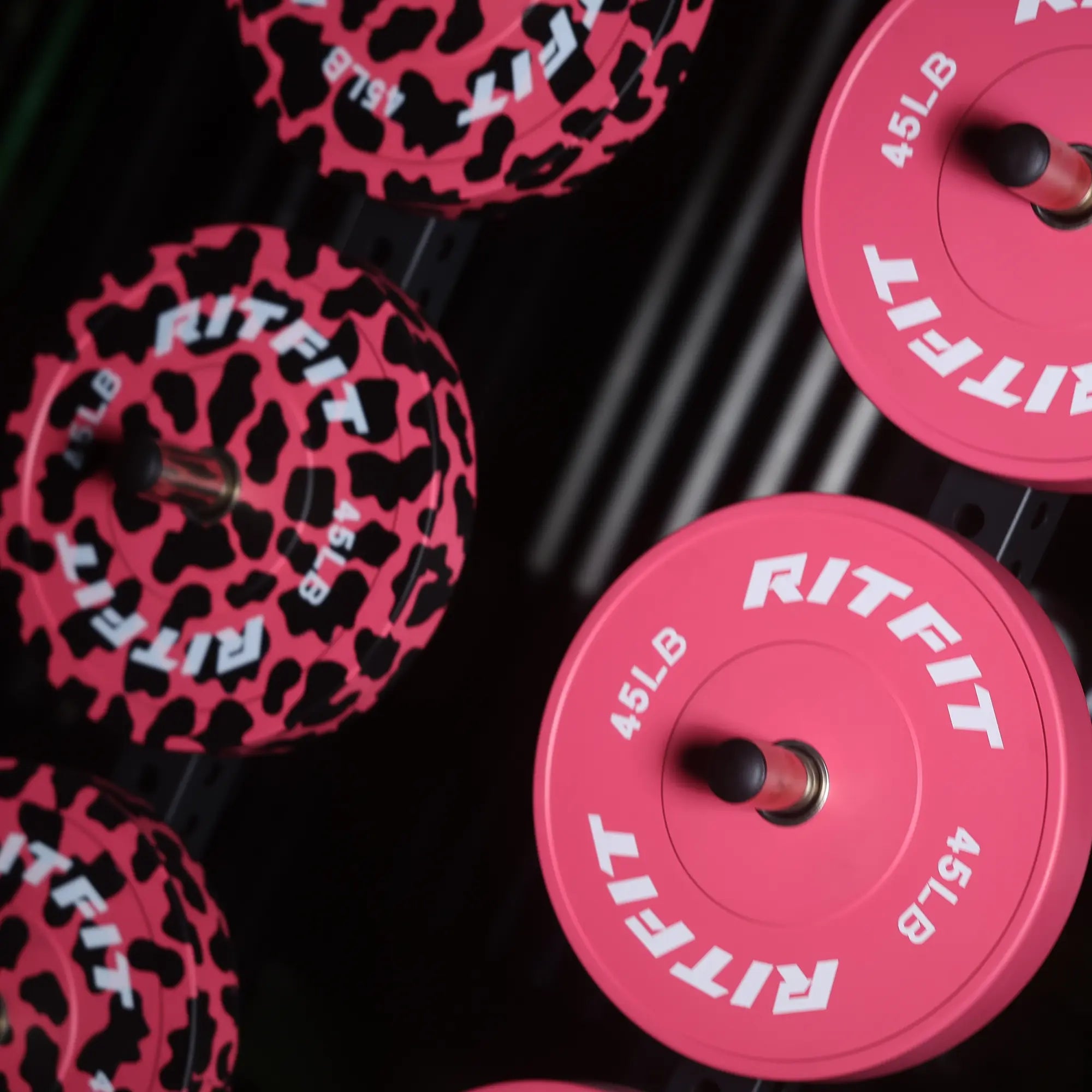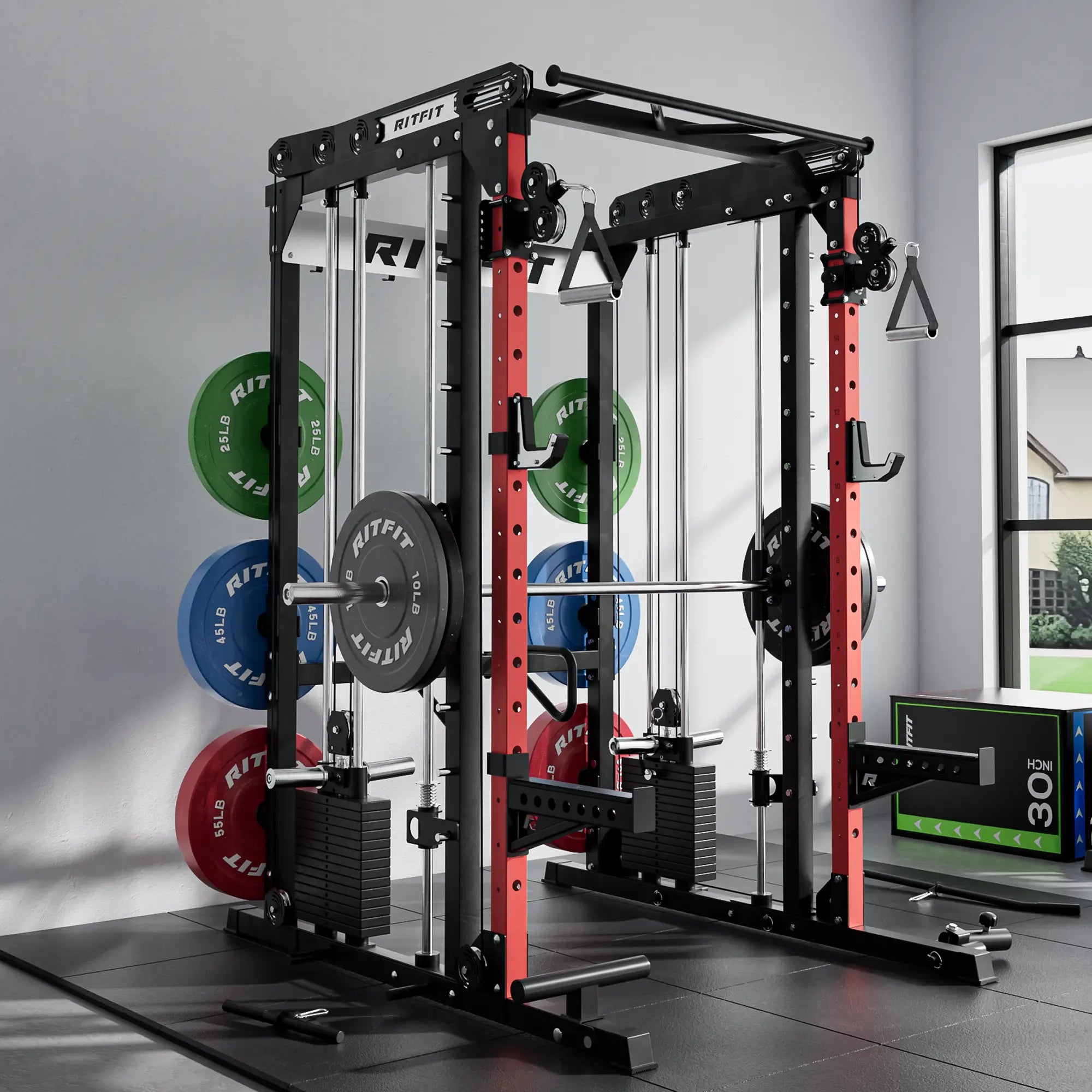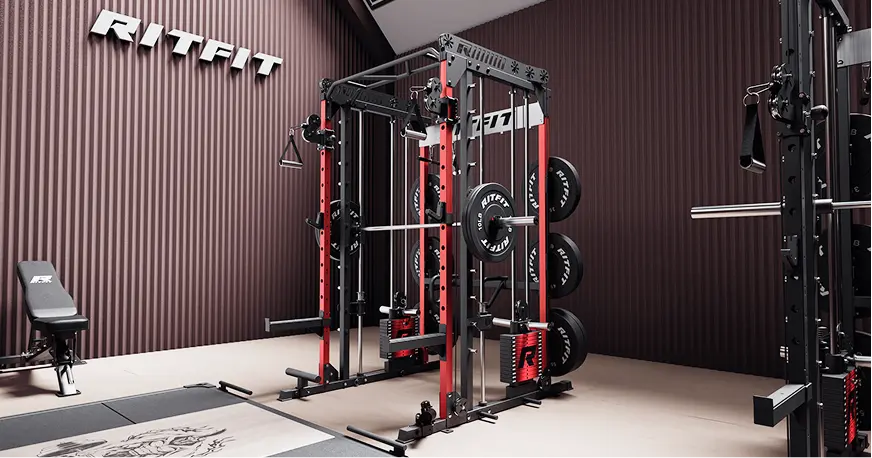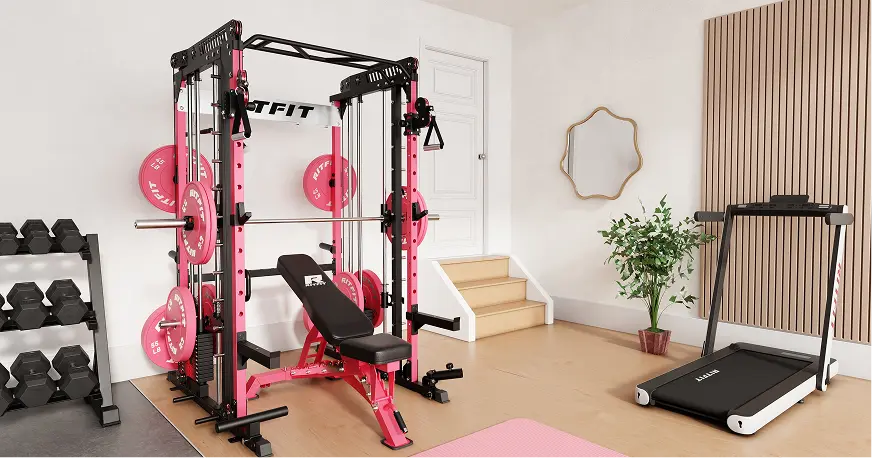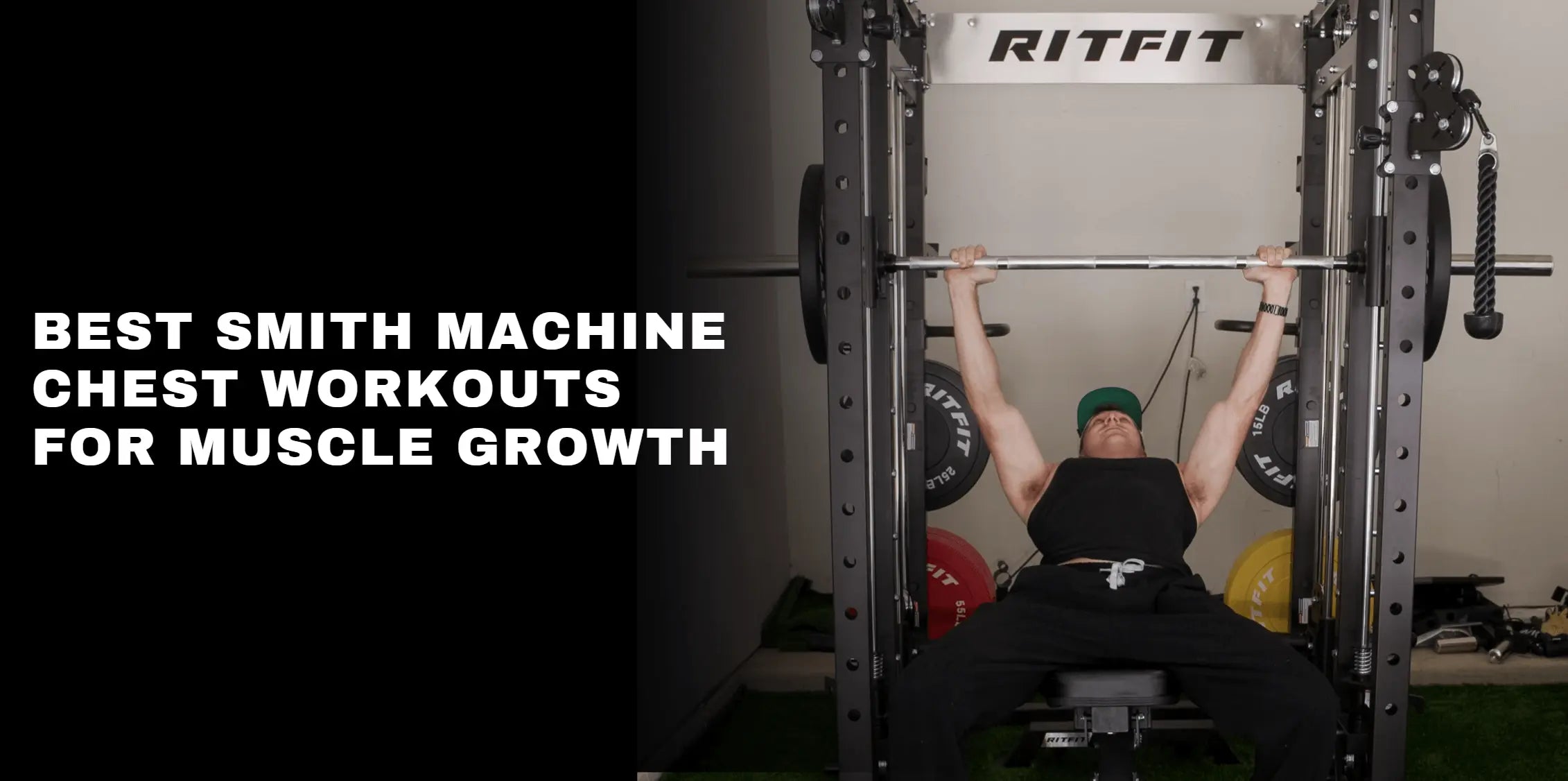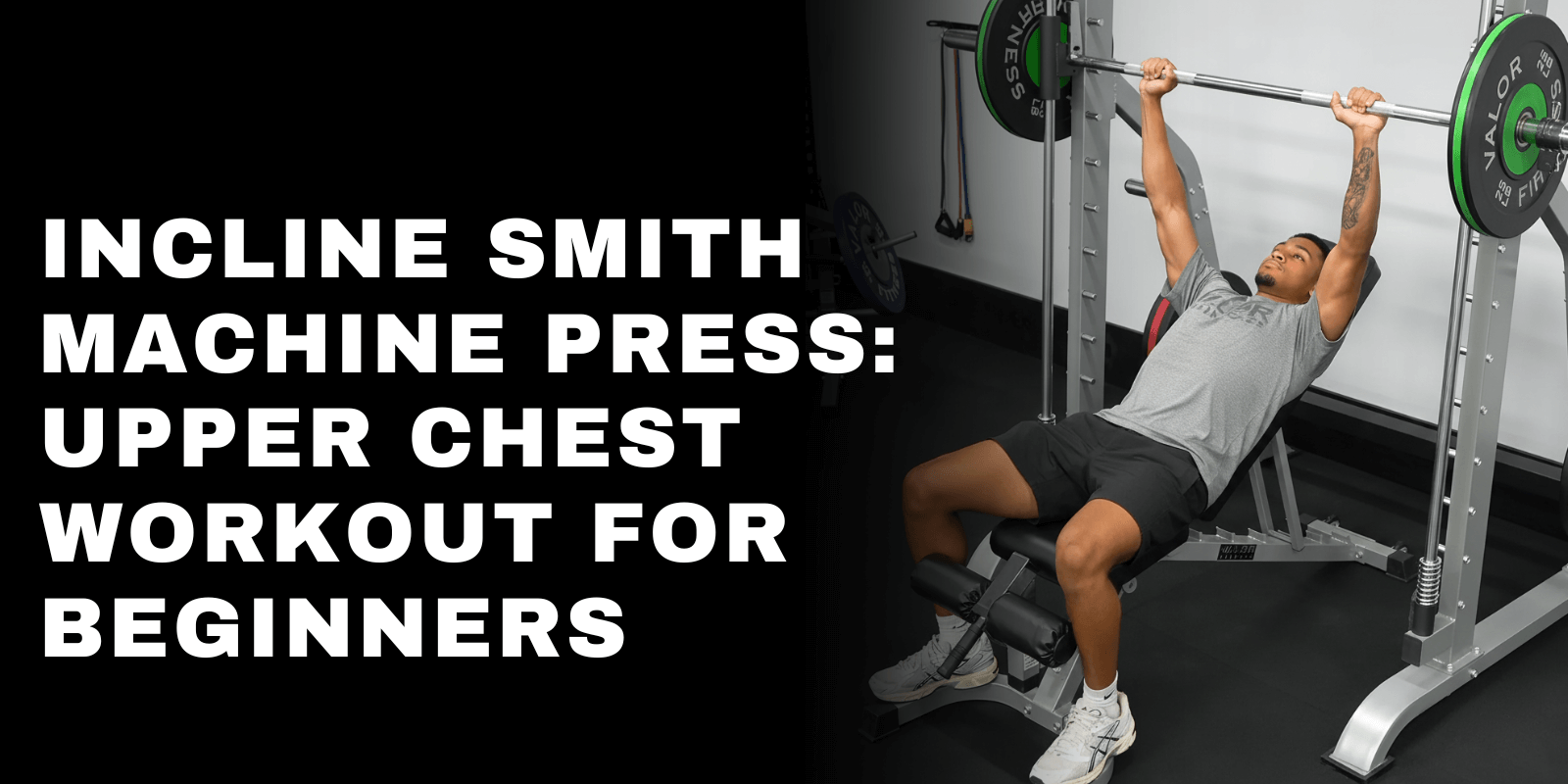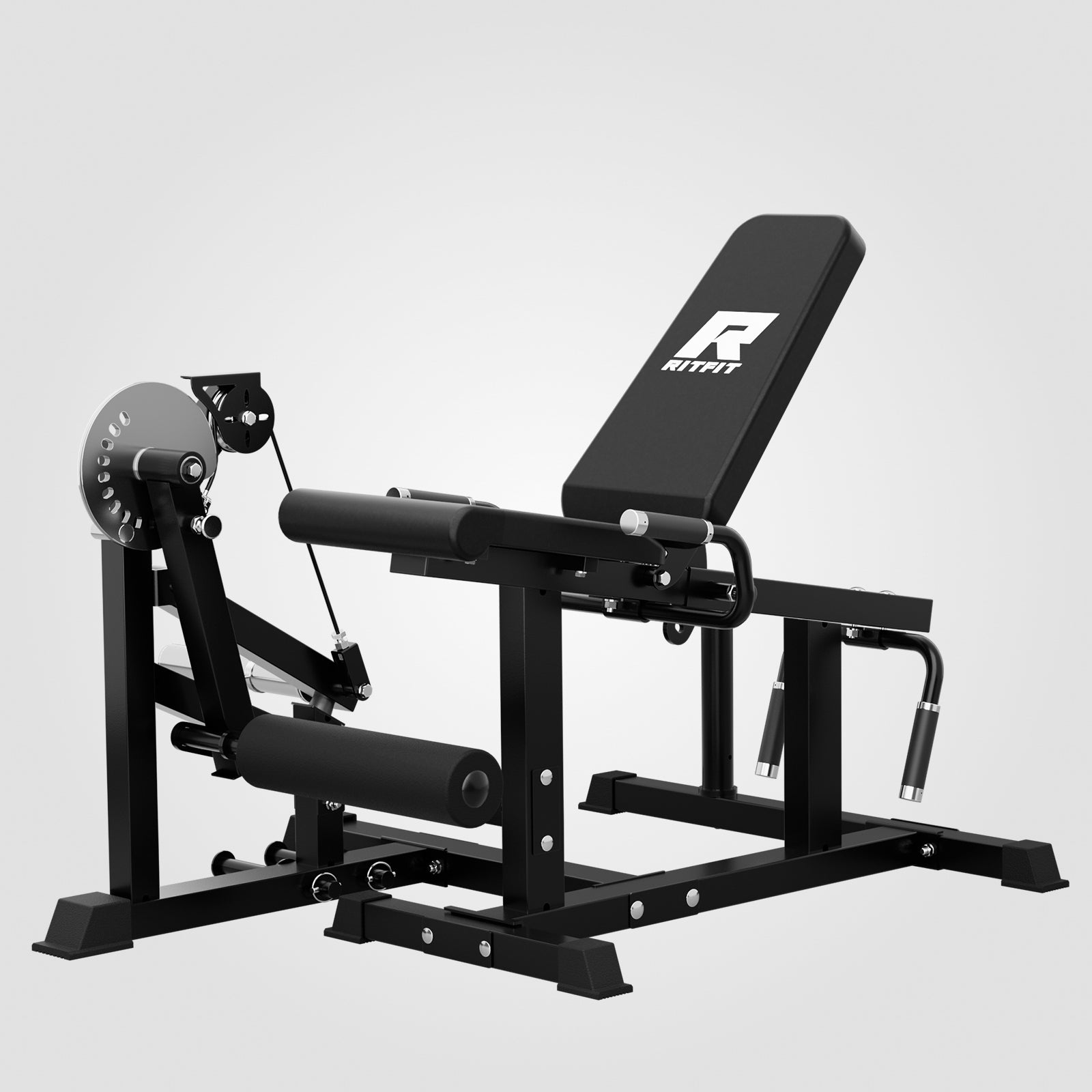Table of Contents
If your traps look flat, your posture feels sloppy, or your neck stays tight no matter how much you stretch, the Smith machine shrug might be the one lift you're missing. This simple, controlled movement packs a surprising punch, helping you build thicker traps, reinforce shoulder stability, and fix the “tech-neck” slump that modern life creates.
But here’s the real question: what if you could lift heavier, stay safer, and finally feel your traps doing every ounce of the work? That’s exactly why the Smith machine shrug earns a place in any smart upper-back routine.
The Benefits of the Smith Machine Shrugs
Developing a strong, durable back isn’t just about aesthetically pleasing muscles; it’s also necessary to maintain solid shoulder health and neck stability. The Smith machine shrug provides a distinct mechanical advantage that allows you to heave the trapezius and overload it without losing your form or putting yourself at risk.
Big traps. Safer lifts. Better posture. No excuses.
Superior Muscle Isolation
You remove movement and with it momentum, and you force the upper traps into a position where they have to execute purely vertical action. This rigid pathway promotes a stronger mind/muscle connection, which leads to better muscle fiber recruitment without the influence of stabilizing muscles getting directly involved in the movement.
Reduced Injury Risk
As a weightlifting enthusiast, I love that the fixed track prevents the bar from drifting forward or backward, which specifically protects your rotator cuffs and lower lumbar spine. You can safely load up heavy weights on your RitFit smith machine without worrying about losing your balance or straining your lower back mid-set.
Postural Correction
Many of us suffer from "tech neck" and rounded shoulders, but heavy shrugs strengthen the muscles responsible for holding your head and shoulders in a neutral position. Scapular stabilization exercises, which engage the trapezius and levator scapulae, can improve head posture and reduce pain in individuals with neck pain and forward head posture, according to a 2016 study[1].
Greater Overload Potential
Because stability is not a limiting factor, you can often handle significantly heavier loads on the Smith machine compared to standard dumbbells or a free barbell. This ability to safely apply maximal mechanical tension is exactly what is needed to break through strength plateaus and thicken the upper back region.
Muscles Worked by the Smith Machine Shrugs
To build a powerful physique and prevent neck pain, you need to understand exactly what you are training. While the shrug looks simple, it recruits a specific network of muscles that are vital for both that "yoke" aesthetic and cervical spine stability.
Primary movers. Stabilizing forces. Complete upper-back development.
Upper Trapezius
These are the large, surface-level muscles running from the base of your skull out to your shoulders, and they are the absolute stars of this show. They are responsible for scapular elevation, literally lifting your shoulders toward your ears, which creates that coveted, mountainous look along the neck.
Middle Trapezius
As the upper fibers deal with vertical pull, the middle fibers join in to slightly retract your shoulder blades and maintain posture. This also engages your shoulders, which stops the rolling forward of your shoulder during the lift, so that more load stays where it’s supposed to – on your target muscle and not around your joints.
Levator Scapulae
It is tucked deep below the traps on the side of your neck and, along with the upper trapezius, elevates the shoulder blade. As a sports medicine physician, I like this muscle because strengthening it specifically supports the cervical spine and helps remedy chronic neck stiffness.
Rhomboids
The rhomboids sit between your backbone and shoulder blades, and they help support the scapulae through every part of the shrugging motion.
They effectively lock your scapula in a safe position, preventing the "rounding" that can lead to injury when you are going heavy on your workout equipment.
Forearm Flexors
Even though the Smith machine stabilizes the bar path, your grip strength is arguably tested more here than in lighter exercises. Your forearm muscles must contract isometrically to maintain a solid connection with the bar, contributing to functional grip strength and arm development.
How To Do the Smith Machine Shrugs
Getting the mechanics just right with your Smith machine shrug is what separates merely moving some weight from truly stimulating hyper growth. As a coach, I see far too many athletes just wasting energy on this jerk when trying to achieve more momentum, so doing it like this ensures that every repetition is building you a better set of necks and traps without needlessly loading your spine.
Set height. Grip hard. Drive up. Squeeze tight. Lower slow.
Step 1: Set the Bar Height
Adjust the bar on your RitFit Smith Machine so it rests at mid-thigh level, allowing you to reach it with a neutral spine and slightly bent knees. This specific starting position spares your lower back from having to deadlift the weight from the floor, letting you save all your energy for the traps.
Step 2: Secure Your Stance and Grip
Stand with your feet shoulder-width apart, holding the bar using an overhand grip with hands a bit wider than shoulder width. Brace your core and maintain a proud chest to lay down some solid stability that safeguards your spine during the big lift.
Step 3: Unrack the Weight
Finally, to get out of the hooks on your rack so you can put down heavy weight or rest without crushing yourself, straighten your legs and slowly turn your wrists back to disengage the safety hook from the lock system of whatever Squat Stand / Power Rack you’re using. Simply pause briefly to allow the weight to settle, with your arms being completely outstretched when you start, and your shoulders beginning in a totally depressed, relaxed position.
Step 4: Initiate the Shrug
Forcefully exhale as you shoot your shoulders straight up to your ears, imagining that you are reaching your traps toward the ceiling. Keep your elbows as straight as possible and don’t let your shoulders round or pull back when exercising. The machine's unique vertical fixed path takes elevation movement to an entirely new level while keeping you safe.
Step 5: Squeeze at the Top
But then pause for 1-2 seconds at the very top in full peak contraction so that metabolic stress is maximized and momentum usage is not even a possibility. Holding briefly at the top creates an isometric contraction, ensuring maximal shortening and full activation of the trapezius, which is crucial for its hypertrophy.
Step 6: Control the Descent
Breathe in and let the bar down gently, resisting the pull of gravity to make sure you’re taking at least two seconds to lower it. An eccentric phase generates micro-tears in muscle under tension, and this is largely what drives the muscle rebuilding process to produce thicker, denser muscles.
Step 7: Re-rack Safely
When you hit your desired reps, twist your wrists forward, and the safety hooks lock back into place in the Smith machine track. Now bend your knees to let the bar come back down to rest on the rack so that you are no longer holding any weight before unhooking.
If you have cervical pain or shoulder impingement, consult a clinician before heavy shrug training
Smith Machine Shrugs: Workout For Beginners
When you start a new fitness routine, it takes both patience and structure. As a coach, I suggest this small trick to kill the Smith shoulder shrug workout without painful for your neck or shoulders.
Warm-Up
Never start cold. Start with 5 minutes of light cardio, then move on to rotating your neck and circling your arms to free up the cervical area. Do one “feeder set” of 15 reps with just the empty bar on your smith machine to fire up your nervous system and dial in your groove.
Volume and Intensity
Shoot for 3 sets of 12–15 reps for your first month. Select a moderate weight where the last two reps are hard, but you can maintain form. We’re trying to wake up the muscle, not annihilate it.
Tempo Control
Control is king. Perform the move explosively by doing a 1-1-2 tempo: take one second to lift the weight, keep paused for a second more at the top and then bring down in about two seconds. This time-under-tension (TUT) period is fundamental to novice muscle development.
Weekly Progression
Apply progressive overload to keep growing. Each week, try to add 2.5 to 5 lbs to the bar or squeeze out one extra clean rep. Small, consistent jumps lead to massive long-term results.
Common Mistakes to Avoid in Smith Machine Shrugs
The Smith machine is a guided barbell that allows varying degrees of stability, but even with the extra help, bad form can still result in nagging neck pain and suboptimal gains. You'll be able to direct every single bit of effort you produce into building muscle instead of overloading your joints by preventing these common mistakes.
Stop rolling. Lock the elbows. Neutral neck. Check your ego.
Rolling the Shoulders
Many lifters believe rolling their shoulders in a circular motion hits more muscle fibers, but this actually places dangerous grinding stress on the rotator cuff tendons. Stick to a strict vertical motion straight up and straight down to match the machine's path and protect your shoulder capsule.
Using Leg Momentum
If you find yourself dipping your knees to "jump" the weight up, you are using momentum to cheat rather than using your traps to lift. While keeping your legs straight and using a tense core, make sure the trapezius muscles are doing 100% of the work in isolation.
Jutting the Head Forward
Jutting your chin forward as you flex your shoulders up, known as “chicken necking,” can throw off the alignment of your cervical spine and possibly cause nerve compression or tension headaches. Keep your chin tucked slightly and your head in a neutral position to maintain a safe, stacked spine throughout the heavy lift.
Bending the Elbows
When you bend your arms during the upward phase, you unintentionally shift the tension from your upper back to your biceps and forearms. Think of your arms merely as "hooks" or ropes attaching the weight to your shoulders, keeping your elbows locked out to force the traps to do the work.
Shortening the Range of Motion
Loading too much weight often results in a "half-shrug" where the shoulders barely move, which fails to fully activate the muscle belly. It is better to strip a plate off your smith machine and achieve a full, high squeeze near your ears than to ego-lift with partial reps.
Smith Machine Shrugs Tips
The fundamentals are covered, but these advanced tips are what truly separate great training from average routines and will help you break through growth plateaus. Implement these strategies in your next session to turn regular shrugs into trap-building power moves and maximize the use of your equipment.
Lock the hands. Hold the weight. Squeeze harder. Protect the core.
Use Lifting Straps
Your grip strength will almost always fail long before your powerful trapezius muscles do, limiting the load and intensity required for serious growth. Using quality lifting straps ensures your hands act simply as hooks, allowing you to overload the target muscles with the maximal weight needed for hypertrophy.
Vary Bar Placement
While most people shrug with the bar in front (anterior shrug), shifting the bar to your back can target the traps differently. Experiment with rear Smith machine shrugs to slightly emphasize the middle and lower trap fibers for a more comprehensive, three-dimensional upper back development.
Implement the Mind-Muscle Connection
Don't just lift the weight; focus intensely on contracting the muscle fibers as you drive your shoulders up, visualizing the tissue squeezing toward your ears.
This mental aspect actually leads to a higher motor unit recruitment with every single rep, which in turn means that each and every one of your reps will be so much more effective than if you were just half-assing it.
Maintain Constant Tension
Never bottom out or rest at the bottom of the rep, as this will take all mechanical pressure off the muscle. Instead, CRANK out a full range set but hold the contraction just before fully relaxed and keep your traps under tension for the entire duration of the set.
Prioritize Bracing and Breathing
When you’re doing heavy lifts, like squats, use the Valsalva maneuver: take a deep breath before the rep and hold it as you do the movement to increase intra-abdominal pressure that supports your spine and core. This bracing step is crucial to protecting your spine and lifting the most weight possible off of your smith machine.
Smith Machine Shrugs Variations
Once you know how to do the basic shrug, these variations give you different ways to work your trapezius muscles and break through strength plateaus. Switching up your style prevents muscular accommodation and ensures you hit all the major fibers of your upper back.
Front vs. back. Isolation focus. New growth.
Behind-the-Back Shrugs
Moving the bar to your posterior chain slightly shifts the emphasis toward the middle and lower trapezius fibers due to the change in leverage. This variation is excellent for reinforcing scapular retraction and improving overall upper-back thickness and density.
Wide-Grip Shrugs
Taking a grip significantly wider than shoulder-width can slightly alter the bar's leverage and the resulting movement trajectory. This simple adjustment helps focus the tension more acutely on the outer portions of the upper traps, which contributes nicely to visual width.
Final Thoughts
Nothing beats shrugs on the Smith machine for overall posture improvement and trap-building power. You will learn the step-by-step approach to performing the exercise efficiently, minimize beginner errors and maximize upper back gains.
If you're serious about developing stronger traps, standing taller with better posture, and being safer when it comes to heavy lifting … start including Smith machine shrugs in your weekly training program and notice the difference in how strong and stable everything feels.
Reference
- Im B, Kim Y, Chung Y, Hwang S. Effects of scapular stabilization exercise on neck posture and muscle activation in individuals with neck pain and forward head posture. J Phys Ther Sci. 2016;28(3):951-955. doi:10.1589/jpts.28.951


